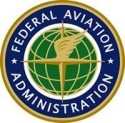Thu, Dec 24, 2009
One Aircraft Went Down Following An Apparent Electrical
Malfunction, Fire
 The FAA his issued a Special Airworthiness Information
Bulletin (SAIB) concerning circuit breakers in older GA aircraft. A
fire hazard exists following circuit breaker resets.
The FAA his issued a Special Airworthiness Information
Bulletin (SAIB) concerning circuit breakers in older GA aircraft. A
fire hazard exists following circuit breaker resets.
The case cited involves a pilot who had a weather radar failure
and a burning smell in the airplane the day prior to the accident.
The pilot turned off the weather radar and manually pulled the
related circuit breaker. The burning smell went away according to
the pilot’s entry in the airplane’s maintenance
discrepancy binder. The pilot continued the flight with the circuit
breaker pulled for another hour.
The next day it is likely the pilots reset the weather radar
C/B, restoring power to the weather radar system wiring. This is
consistent with routine or the “Before Starting
Engines” checklist. Then 10 minutes after takeoff, they
announced a problem and crashed about two minutes later. The NTSB
determined that the most likely failure was from the weather radar
and its associated wiring, which would be possible only if that
crew reset the weather radar circuit breaker.
Current guidance for part 25, Transport Airplanes in AC 25-16,
Electrical Fault and Fire Prevention and Protection that has been
accepted for small airplanes, is to recommend that no pilot should
reset any circuit breaker more than once. In the accident airplane,
the FAA does not know if the circuit breaker tripped again but, if
it did, it was after an uncontrollable fire was started.
The FAA says that the C/Bs that are essential for safety in
flight are required to be located and marked so they can be reset
in flight. The rules do not require segregation of non-essential
C/Bs. This SAIB references the most current “best
practices” for circuit breakers, the electrical system and
aging wiring. It is important to note that many older aircraft may
have little or no guidance on resetting policy in their airplane
flight manuals.
The FAA recommends that pilots and owners mark those breakers
that are essential for safety in flight. “Essential”
C/Bs should be reset in flight only once after at least one minute,
if there is no remaining smoke or “burning smell” and
the affected system and equipment is needed for the operational
environment.
FAA says any non-essential C/Bs should not be re-set in flight.
Preflight checklists should be revised delete “Circuit
breakers-In”, if applicable, and insert: “Check circuit
breakers and if a circuit breaker is not set, do not reset the
circuit breaker if there is a related maintenance
malfunction.”
More News
“These new aircraft strengthen our ability to respond quickly, train effectively and support communities nationwide. Textron Aviation has been a steadfast supporter in helpin>[...]
From 2011 (YouTube Edition): Rugged, Legendary, STOL Twin Makes A Comeback The de Havilland Twin Otter is an airplane with a long history, and it gained a reputation as a workhorse>[...]
A Wind Gust Lifted The Right Wing And The Airplane Turned To The Left Analysis: The pilot was departing from a 2,395-ft-long by 50-ft-wide turf runway. The pilot reported that afte>[...]
Have A Story That NEEDS To Be Featured On Aero-News? Here’s How To Submit A Story To Our Team Some of the greatest new stories ANN has ever covered have been submitted by our>[...]
Braking Action Advisories When tower controllers receive runway braking action reports which include the terms “medium," “poor," or “nil," or whenever weather con>[...]
 Aero-News: Quote of the Day (12.18.25)
Aero-News: Quote of the Day (12.18.25) Classic Aero-TV: Viking Twin Otter 400--Bringing the DHC-6 Back Into Production
Classic Aero-TV: Viking Twin Otter 400--Bringing the DHC-6 Back Into Production NTSB Final Report: Rans Employee Flying Club Rans S-6ES Coyote II
NTSB Final Report: Rans Employee Flying Club Rans S-6ES Coyote II ANN FAQ: Submit a News Story!
ANN FAQ: Submit a News Story! ANN's Daily Aero-Term (12.18.25): Braking Action Advisories
ANN's Daily Aero-Term (12.18.25): Braking Action Advisories



